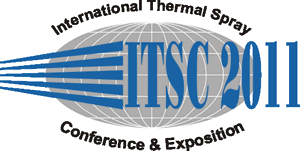
|
2473 |
|
Tuesday, September 27, 2011, Saal B2.2 4:00 PM Fuel Cells 1 |
|
Vacuum plasma sprayed insulating layers suitable for brazing in high temperature fuel cells |
|
Johannes Arnold* / German Aerospace Center (DLR)
Institute of Technical Thermodynamics
, BW Rudolf Henne / , Germany Robert Ruckdäschel/ DLR, Institute of Technical Thermodynamics, Germany Hermann W. Grünling/ MatConsult, Germany Uwe Maier/ ElringKlinger AG, Germany |
|
Solid Oxide Fuel Cells (SOFCs) operating above 700 °C shall be used in power generators for mobile applications. The required short starting times mean high material and system stresses due to high thermal gradients and transients. For such applications cassette type cells with low weight have been developed where the electrically active cell part is fixed within a metallic containment consisting of two ferrite sheets. Both have to be connected at their outer rims to get a tight containment for the active part of the cell. However, this connection has to be accomplished such that the sheets are insulated electrically from each other to prevent any electrical short-cut. Several approaches exist. Besides glass soldering reactive air braze (RAB) can be used. With active braze, however, the penetration of the insulation layer cannot be controlled sufficiently. Another technology, discussed in this paper, is to use braze metals without any reactive component, but to spray the reactive material (Ti or Zr) together with the insulating ceramics on the cassette rims. This is done by vacuum plasma spraying to prevent any oxidation of the reactive component which could cancel its desired function. However, due to the fact that Ti or Zr is highly pyrophoric they are not available or cannot be handled as very fine spray powders. Therefore, relatively inert and available fine hydride powders of these materials are used which decompose within the plasma. The resulting metal inserts generate with the ceramics a cermet layer of high density and good mechanical bonding. They stop the braze metal and transform into insulating metal oxides with brazing in air. As will be shown, this approach proved successful in principle with a lot of examples spraying Ti-hydride together with Mg-spinel powders and with different layer designs to mitigate CTE mismatches of the involved materials. |